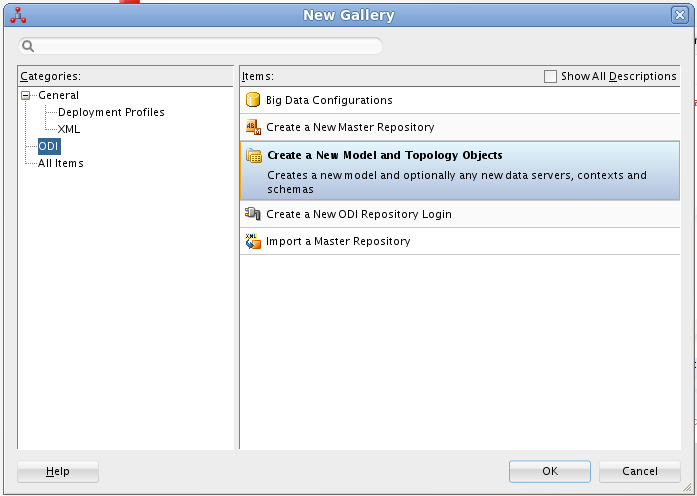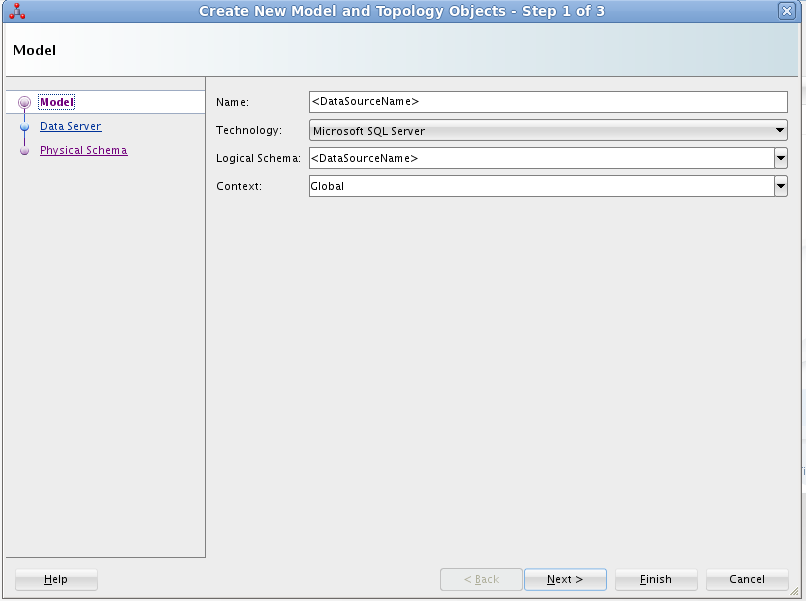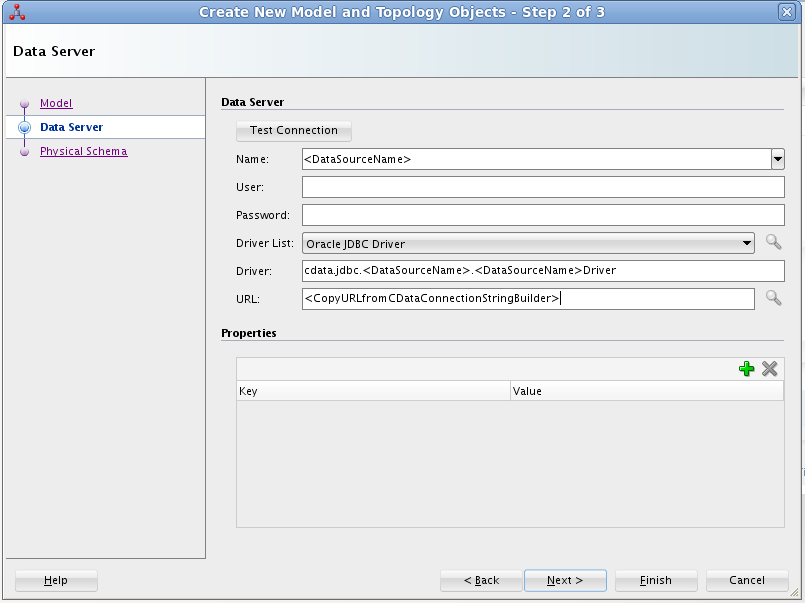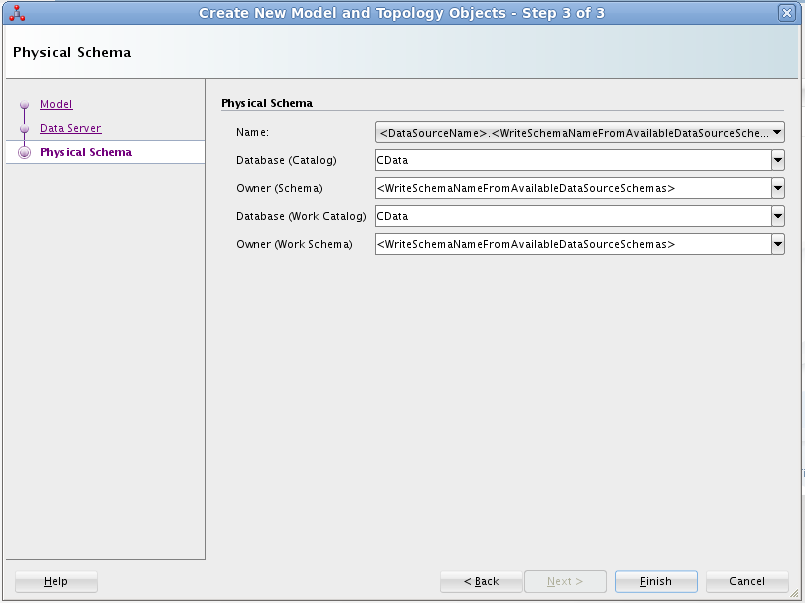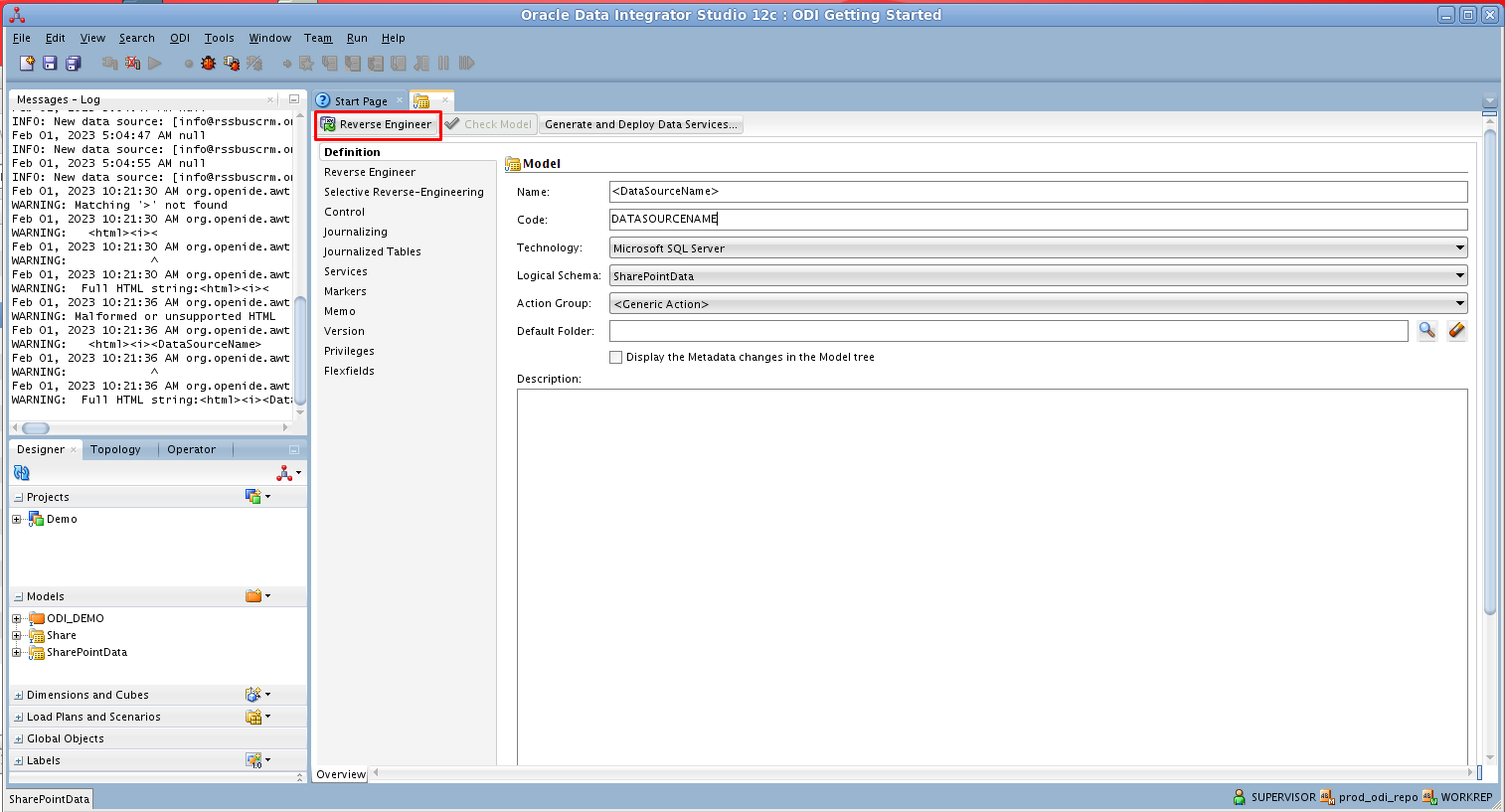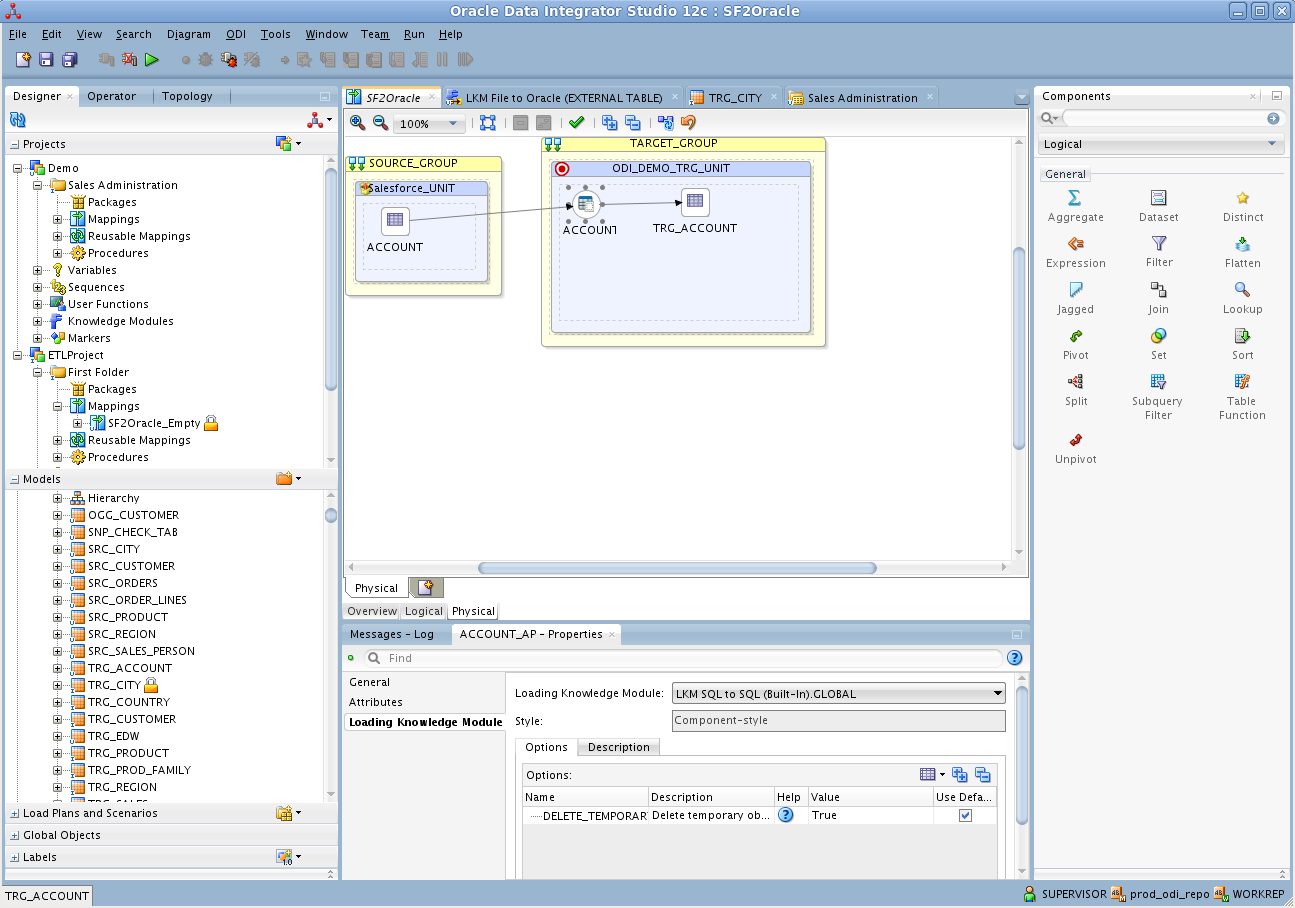Discover how a bimodal integration strategy can address the major data management challenges facing your organization today.
Get the Report →ETL BigCommerce in Oracle Data Integrator
This article shows how to transfer BigCommerce data into a data warehouse using Oracle Data Integrator.
Leverage existing skills by using the JDBC standard to read and write to BigCommerce: Through drop-in integration into ETL tools like Oracle Data Integrator (ODI), the CData JDBC Driver for BigCommerce connects real-time BigCommerce data to your data warehouse, business intelligence, and Big Data technologies.
JDBC connectivity enables you to work with BigCommerce just as you would any other database in ODI. As with an RDBMS, you can use the driver to connect directly to the BigCommerce APIs in real time instead of working with flat files.
This article walks through a JDBC-based ETL -- BigCommerce to Oracle. After reverse engineering a data model of BigCommerce entities, you will create a mapping and select a data loading strategy -- since the driver supports SQL-92, this last step can easily be accomplished by selecting the built-in SQL to SQL Loading Knowledge Module.
Install the Driver
To install the driver, copy the driver JAR and .lic file, located in the installation folder, into the ODI appropriate directory:
- UNIX/Linux without Agent: ~/.odi/oracledi/userlib
- UNIX/Linux with Agent: $ODI_HOME/odi/agent/lib
- Windows without Agent: %APPDATA%\Roaming\odi\oracledi\userlib
- Windows with Agent: %APPDATA%\Roaming\odi\agent\lib
Restart ODI to complete the installation.
Reverse Engineer a Model
Reverse engineering the model retrieves metadata about the driver's relational view of BigCommerce data. After reverse engineering, you can query real-time BigCommerce data and create mappings based on BigCommerce tables.
-
In ODI, connect to your repository and click New -> Model and Topology Objects.
![Create a New Model]()
- On the Model screen of the resulting dialog, enter the following information:
- Name: Enter BigCommerce.
- Technology: Select Generic SQL (for ODI Version 12.2+, select Microsoft SQL Server).
- Logical Schema: Enter BigCommerce.
- Context: Select Global.
![Configuring the Model]()
- On the Data Server screen of the resulting dialog, enter the following information:
- Name: Enter BigCommerce.
- Driver List: Select Oracle JDBC Driver.
- Driver: Enter cdata.jdbc.bigcommerce.BigCommerceDriver
- URL: Enter the JDBC URL containing the connection string.
BigCommerce authentication is based on the standard OAuth flow. To authenticate, you must initially create an app via the Big Commerce developer platform where you can obtain an OAuthClientId, OAuthClientSecret, and CallbackURL. These three parameters will be set as connection properties to your driver.
Additionally, in order to connect to your BigCommerce Store, you will need your StoreId. To find your Store Id please follow these steps:
- Log in to your BigCommerce account.
- From the Home Page, select Advanced Settings > API Accounts.
- Click Create API Account.
- A text box named API Path will appear on your screen.
- Inside you can see a URL of the following structure: https://api.bigcommerce.com/stores/{Store Id}/v3.
- As demonstrated above, your Store Id will be between the 'stores/' and '/v3' path paramters.
- Once you have retrieved your Store Id you can either click Cancel or proceed in creating an API Account in case you do not have one already.
Built-in Connection String Designer
For assistance in constructing the JDBC URL, use the connection string designer built into the BigCommerce JDBC Driver. Either double-click the JAR file or execute the jar file from the command-line.
java -jar cdata.jdbc.bigcommerce.jarFill in the connection properties and copy the connection string to the clipboard.
![Using the built-in connection string designer to generate a JDBC URL (Salesforce is shown.)]()
Below is a typical connection string:
jdbc:bigcommerce:OAuthClientId=YourClientId; OAuthClientSecret=YourClientSecret; StoreId='YourStoreID'; CallbackURL='http://localhost:33333'InitiateOAuth=GETANDREFRESH
![Configuring the Data Server]()
- On the Physical Schema screen, enter the following information:
- Name: Select from the Drop Down menu.
- Database (Catalog): Enter CData.
- Owner (Schema): If you select a Schema for BigCommerce, enter the Schema selected, otherwise enter BigCommerce.
- Database (Work Catalog): Enter CData.
- Owner (Work Schema): If you select a Schema for BigCommerce, enter the Schema selected, otherwise enter BigCommerce.
![Configuring the Physical Schema]()
- In the opened model click Reverse Engineer to retrieve the metadata for BigCommerce tables.
![Reverse Engineer the Model]()
Edit and Save BigCommerce Data
After reverse engineering you can now work with BigCommerce data in ODI.
To edit and save BigCommerce data, expand the Models accordion in the Designer navigator, right-click a table, and click Data. Click Refresh to pick up any changes to the data. Click Save Changes when you are finished making changes.
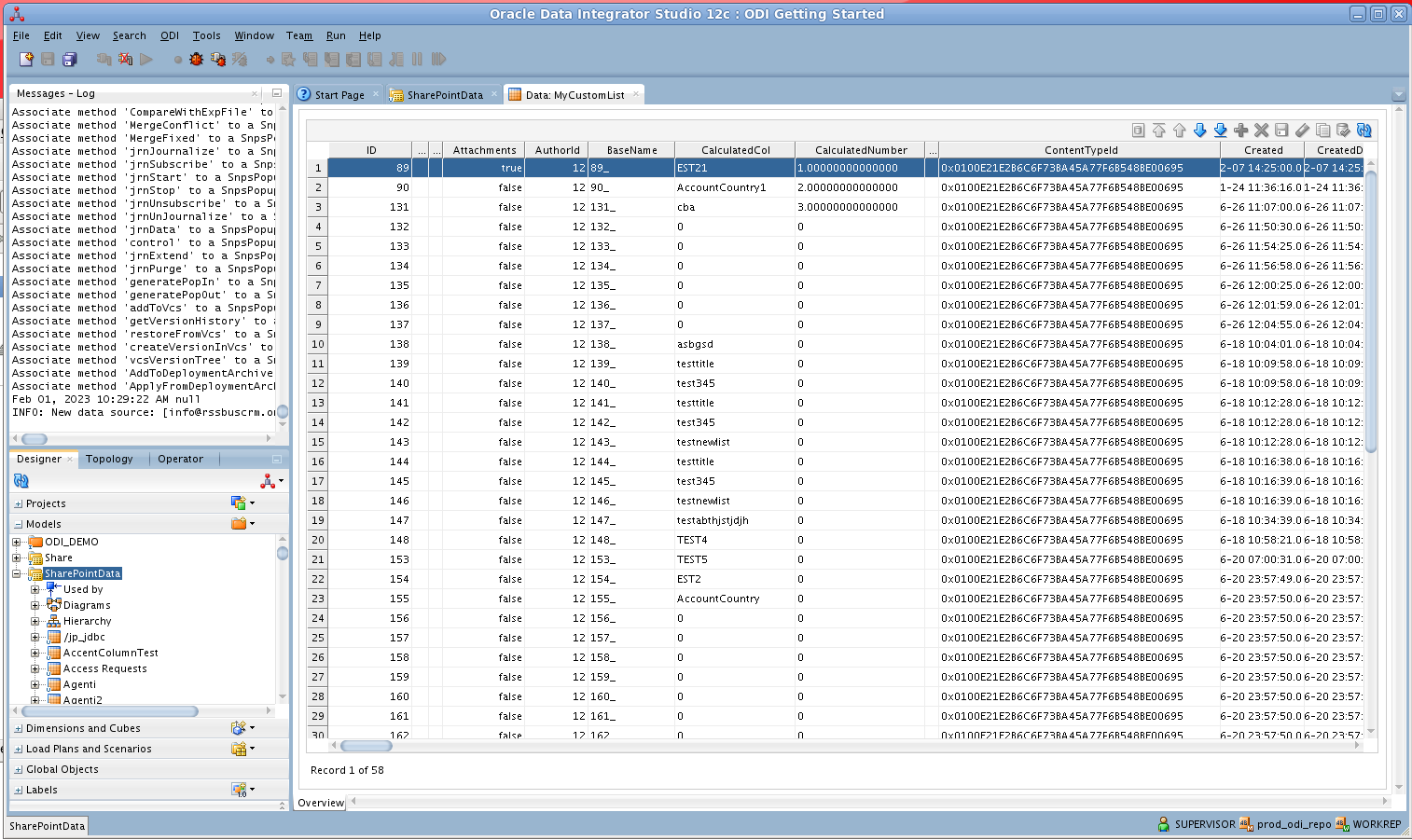
Create an ETL Project
Follow the steps below to create an ETL from BigCommerce. You will load Customers entities into the sample data warehouse included in the ODI Getting Started VM.
Open SQL Developer and connect to your Oracle database. Right-click the node for your database in the Connections pane and click new SQL Worksheet.
Alternatively you can use SQLPlus. From a command prompt enter the following:
sqlplus / as sysdba- Enter the following query to create a new target table in the sample data warehouse, which is in the ODI_DEMO schema. The following query defines a few columns that match the Customers table in BigCommerce:
CREATE TABLE ODI_DEMO.TRG_CUSTOMERS (LASTNAME NUMBER(20,0),FirstName VARCHAR2(255)); - In ODI expand the Models accordion in the Designer navigator and double-click the Sales Administration node in the ODI_DEMO folder. The model is opened in the Model Editor.
- Click Reverse Engineer. The TRG_CUSTOMERS table is added to the model.
- Right-click the Mappings node in your project and click New Mapping. Enter a name for the mapping and clear the Create Empty Dataset option. The Mapping Editor is displayed.
- Drag the TRG_CUSTOMERS table from the Sales Administration model onto the mapping.
- Drag the Customers table from the BigCommerce model onto the mapping.
- Click the source connector point and drag to the target connector point. The Attribute Matching dialog is displayed. For this example, use the default options. The target expressions are then displayed in the properties for the target columns.
- Open the Physical tab of the Mapping Editor and click CUSTOMERS_AP in TARGET_GROUP.
- In the CUSTOMERS_AP properties, select LKM SQL to SQL (Built-In) on the Loading Knowledge Module tab.
![SQL-based access to BigCommerce enables you to use standard database-to-database knowledge modules.]()
You can then run the mapping to load BigCommerce data into Oracle.






